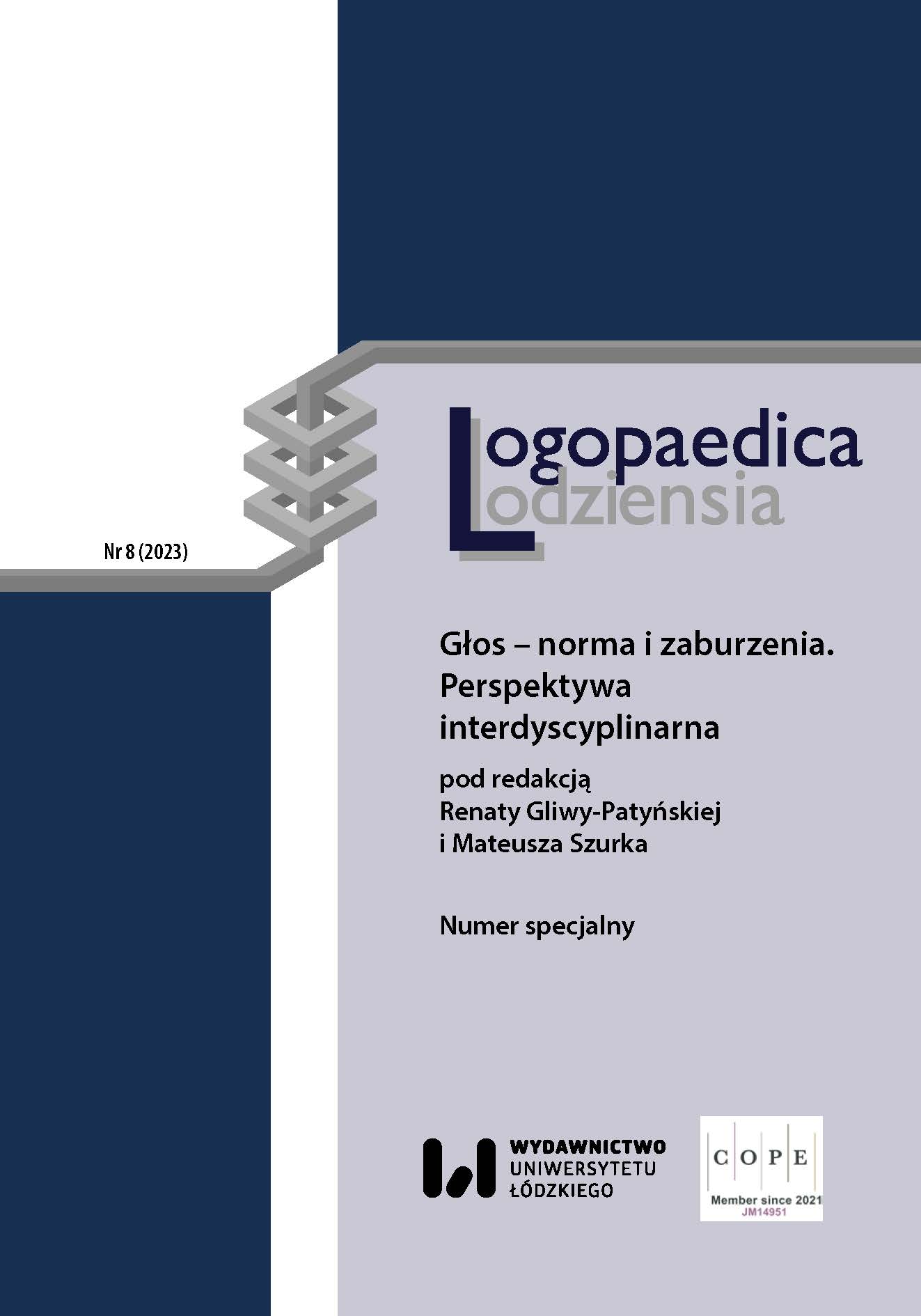Rehabilitacja głosu u chorych po laryngektomii całkowitej. Co się zmieniło?
The Voice Rehabilitation in Patients After Total Laryngectomy. What Has Changed?
Author(s): Jurek Olszewski, Katarzyna SzkutnikSubject(s): Health and medicine and law, Family and social welfare
Published by: Wydawnictwo Uniwersytetu Łódzkiego
Keywords: voice rehabilitation; total laryngectomy
Summary/Abstract: The most unpleasant consequence of laryngectomy is the inability to communicate with a sonorous voice. One way to overcome these depressing feelings is to focus on the most important problem at the moment: learning replacement speech. The mechanism of creating the esophageal voice is as follows: the role of the vibration generator is taken over by the upper part of the esophagus, the so‑called mouth of the esophagus, forming a pseudoglossus, and the esophagus is the reservoir of air. The air expelled from the esophagus with an antiperistaltic movement vibrates the pseudo‑loudspeaker, creating a basic sound, which is then appropriately modulated in slightly altered resonance and articulation cavities. It is advisable to start the introductory exercises for learning voice and substitute speech before the surgery. The actual rehabilitation begins after the wound has healed, preferably during hospitalisation. The first exercises should be conducted by a doctor to prevent developing abnormal habits that make it difficult to master the substitute speech. The quality of esophageal speech and the speed of mastering it depends not only on the persistence and regularity of the practitioner. The effectiveness of rehabilitation is delayed by high tension of the esophageal mouth sphincter, the extent of surgery, radiotherapy, hearing loss, poor dental condition, and coexisting diseases. Voice prosthesis implantation is one of the two currently considered equivalent methods of voice rehabilitation in patients after complete removal of the larynx due to cancer. It is a method of surgical voice rehabilitation. The pioneer of this method in Poland was a well‑known and recognised otolaryngologist, prof. Erwin Mozolewski, who first applied voice rehabilitation using a voice prosthesis in Szczecin in 1972. The method of surgical rehabilitation of speech in patients after laryngectomy consists in creating a tracheo‑esophageal fistula and implanting a simple, unidirectional air valve, the so‑called voice prosthesis. This allows the patient, when closing the tracheostomy with a finger, to direct the exhaled air from the lungs to the esophagus and the lower pharynx to produce a substitute basic tone in the same place as in the case of esophageal speech (in the so‑called pharyngeal segment).
Journal: Logopaedica Lodziensia
- Issue Year: 2023
- Issue No: 8
- Page Range: 119-131
- Page Count: 13
- Language: Polish

